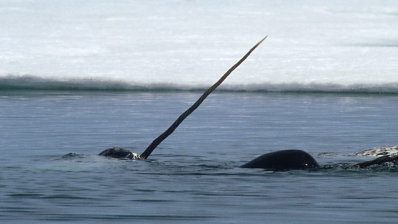Cohesive devices: narwhal
The Grammar Bit!
Text cohesion relates to how well a piece of writing holds together, with phrases, clauses, sentences and paragraphs threaded together in a way that makes the text easy for the reader to follow and understand.
Now that you are in Year 6, you will have had experience of using a range of cohesive devices.
With your talk partner, decide which of the following cohesive devices have been used in the text opposite:
- Use of conjunctions (but, although, because, so, while) to link words, phrases and clauses within a sentence
- Use of conjunctive adverbials (furthermore, meanwhile, on the other hand, however) to link ideas and information between sentences and paragraphs
- Use of pronouns (he, they, his, it) to refer back to a noun already mentioned or forwards to a noun not yet mentioned
- Use of a topic sentence (especially in non-fiction texts) that tells the reader what the rest of the paragraph is about
- Use of synonyms to avoid repetition
- Use of good tense consistency (the avoidance of switching tenses without good reason)
Scintillating Sentences
What is the purpose of the narwhal tusk?
The most striking feature of a narwhal is the long spiralled tusk that protrudes from its head. Though predominantly seen on the male of the species, some females also have a tusk (though it is much shorter and with a less pronounced spiral). So, what do narwhals use their mighty tusks for? This is a question that has intrigued and mystified scientists and explorers.
Originally, some scientists thought that the tusk was a weapon, used when two duelling males fought over a female; others argued that it was either used to spear prey or to break through ice. However, recent studies of narwhals have found no evidence to support any of the above explanations.
Many scientists now think that the tusk is used to attract a mate (like the elaborate antlers of an elk or the iridescent tail feathers of a peacock) and that the longer the tusk, the greater the chance a male has of attracting a female.
Furthermore, recent studies have led to the discovery that the narwhal tusk is a highly sensitive sense organ containing millions of nerve endings, with the main function of the tusk being to detect changes in water pressure, temperature and the saltiness of the sea.
In conclusion, it is unusual for scientists to be so puzzled by the function of something that is so conspicuous. Nevertheless, while we may not have a complete answer to the tusk’s function, it is exciting to think that a few mysteries of the ocean are still open for future explorers and scientists to solve!

Did you know?
When narwhals become trapped by shifting pack ice, they run the risk of falling victim to Inuit hunters, polar bears and even walruses.

